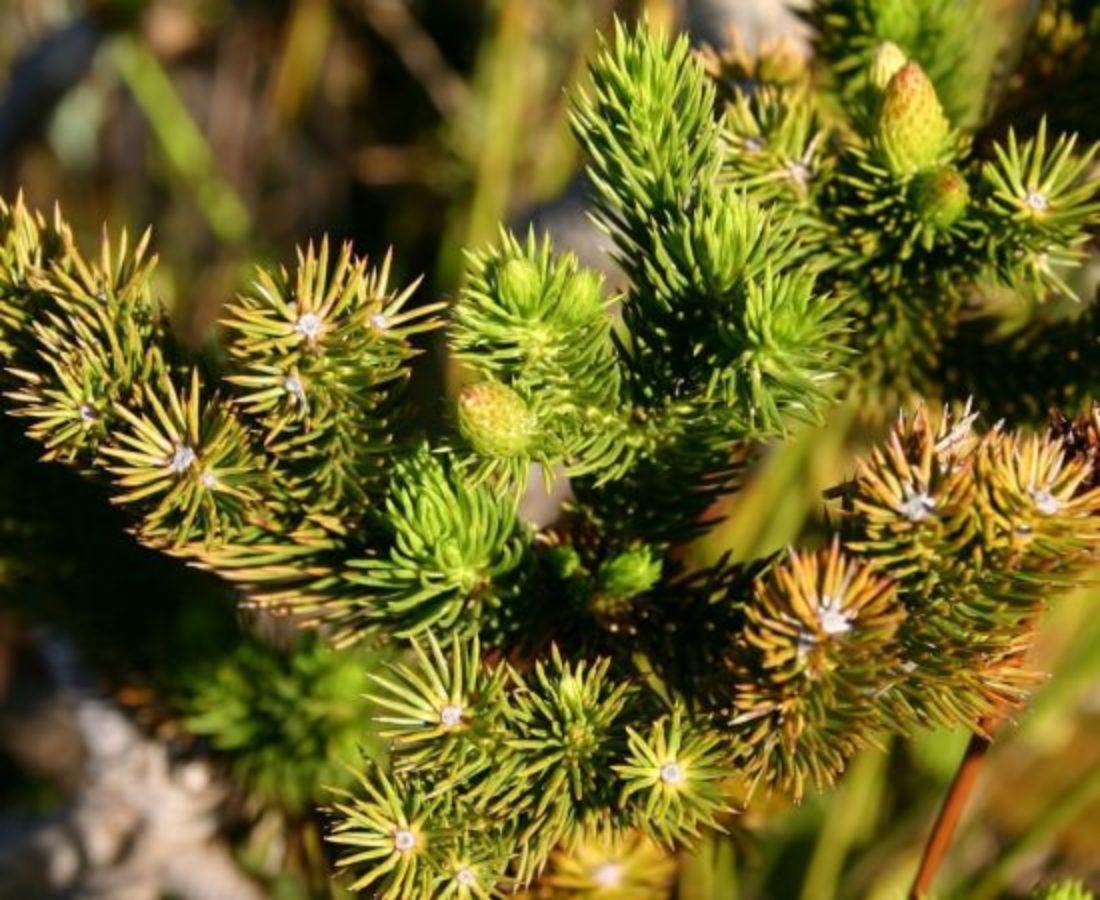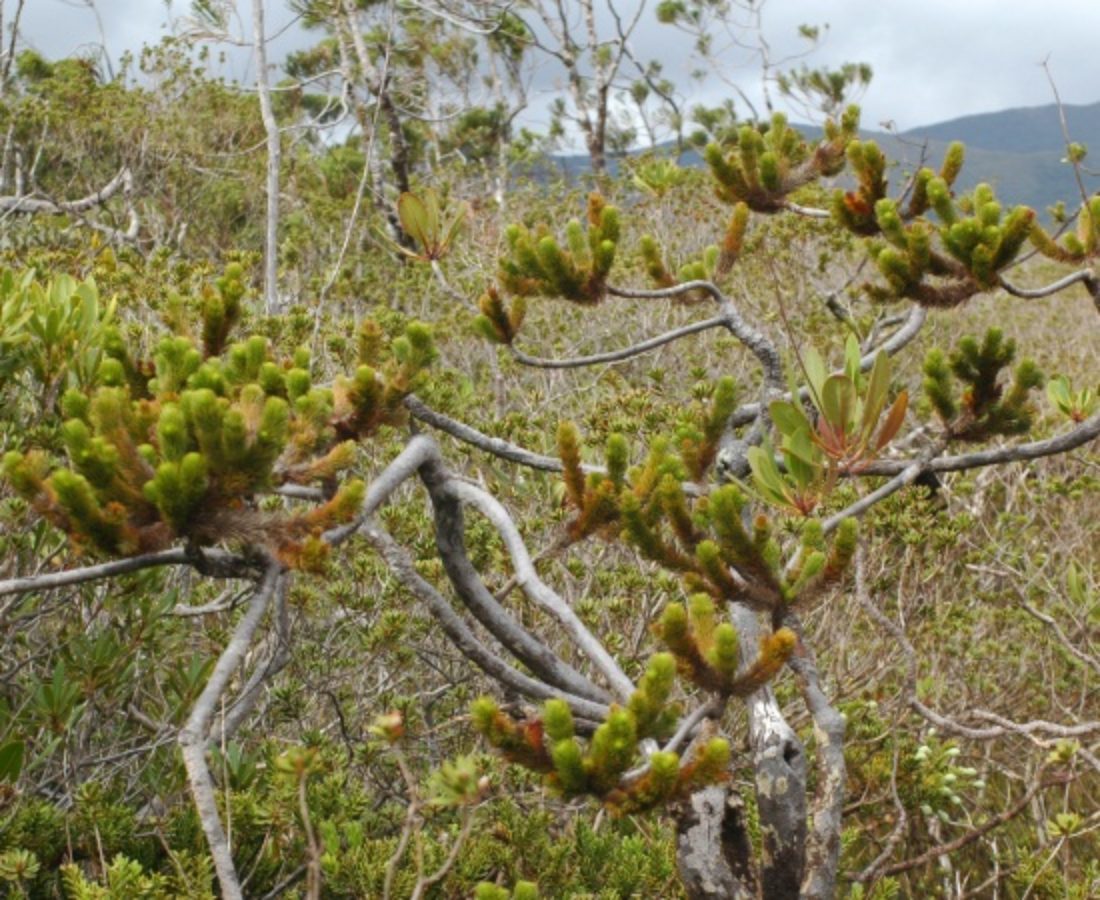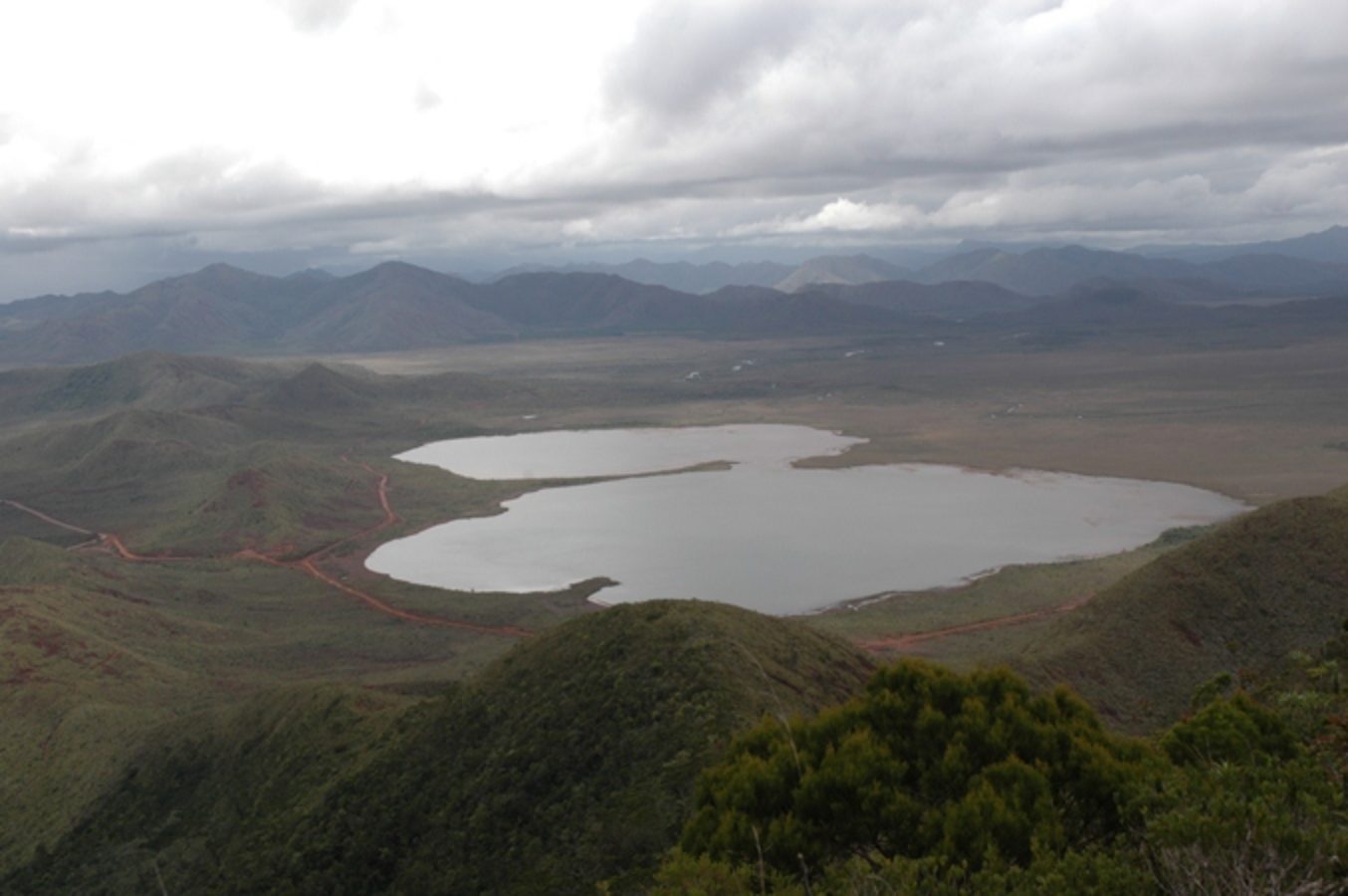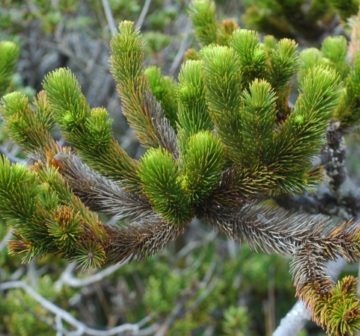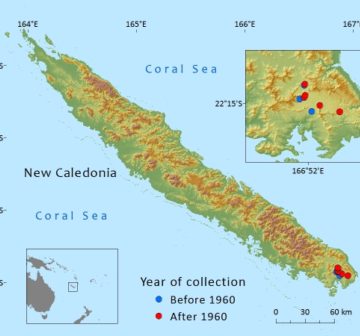Podocarpaceae
Dacrydium guillauminii
One of four species of Dacrydium endemic to New Caledonia where it has an extremely restricted distribution and is Critically Endangered due to fire, tourism and flooding.
Description
Habit
Shrub to 2.m tall; stem thickened at base, branches wide-spreading and ascending. Bark with horizontal stripes and large lenticles, scaly plates appearing when mature, deep brown; inner bark fibrous, red brown.
Foliage
Leaves of juvenile state only, densely covering branches, narrow and long-pointed, curved forward, triangular in cross-section,13–15 x 1mm, stomata borne in intermittent lines on all sides.
Cones
Male pollen-cones terminal, 8-15 x 4mm, with lateral cones at base. Female seed-cones terminal, 8–10mm long, hidden by leaves. Seeds 1–5 per cone, partially covered by epimatium and subtended by leaf-like bracts and much exceeding the seed; seeds ovoid-oblong, 4–5 x 2.5mm, brown.
Note
A natural hybrid with Dacrydium araucarioides has been described as Dacrydium x suprinii Nimsch (Knopf et al, 2007). Less than 10 plants of this hybrid have been found.
References and further reading
- Cornu, A., Sarrailh, J.-M. & Marion, F. (2001). Espèces endémiques et restauration écologique en Nouvelle-Calédonie. Bois Et Forêts Des Tropique 268(2): 57-68.
- de Laubenfels, D. J. (1972). Gymnospermes. In: Aubréville, A. & Leroy, J.-F. (eds.), Flore de la Nouvelle-Calédonie et Dépendances, 4. Paris: Muséum National d’Histoire Naturelle. 167 p.
- Jaffre, T. (1988). Vegetation et flore de la Chute de la Madeleine. Etude en vue d'une proposition de mise en reserve. Laboratoire de Botanique, ORSTOM. 11 pp.
- Jaffré, T., Bouchet, P. & Veillon, J.-M. (1998). Threatened plants of New Caledonia: Is the system of protected areas adequate? Biodiversity & Conservation 7(1): 36.
- Jaffré, T., Munzinger, J. & Lowry, P. P. (2010). Threats to the conifer species found on New Caledonia's ultramafic massifs and proposals for urgently needed measures to improve their protection. Biodiversity & Conservation 19(5):1485-1502.
- Knopf, P., Nimsch, H. and Stutzel, T. (2007). Dacrydium x suprinii nov. hybr., a hybrid of Dacrydium araucarioides Brongn. et Griseb. and Dacrydium guillauminii Buchh. Feddes Repertorium 118(1-2): 51-59.
- Thomas, P. (2010). Dacrydium guillauminii. In: IUCN 2011. IUCN Red List of Threatened Species. Version 2011.2. www.iucnredlist.org. Downloaded on 14 June 2012.

